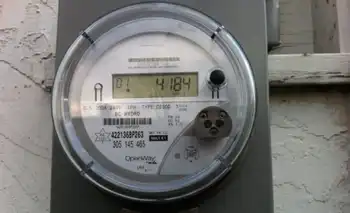Solar packs a powerful punch
- A novel way of comparing solar power with nuclear power finds that solar easily bests nuclear.
Ken Zweibel has an analysis at The Solar Review that compares the two kinds of electrical energy, in terms of how much power is packed into each gram of its respective material: cadmium telluride, versus uranium.
He provides data showing that CdTe thin film solar power using cadmium telluride takes ten times less PV material to make 1 kilowatt hour of electricity, than nuclear uses of uranium, to make an identical 1 kilowatt hour of electricity.
This is even comparing the two as if solar "used up" each gram of cadmium telluride the way that nuclear power uses up its uranium fuel pretty much — some can be recycled, theoretically. But of course, solar doesn't burn up fuel. You can get electricity from the same grams of PV material for at least thirty years, and then the material can be recycled and still used again.
By contrast, the equivalent grams of nuclear uranium must be replaced with newly mined uranium once the first has yielded its energy.
Here's his math. It takes 12 grams of CdTe to make a one square meter solar thin film module.
"In a year in an average U.S. location, we harvest about 11 x 1750 kWh/m2-yr, or 154 kWh/yr after accounting for another 20 in losses" he notes.
So we need 0.08 of a gram per kilowatt hour for one year's supply of electricity. But that assumes we've used up the gram by the end of the year.
"But wait!" he cries. "We don't burn PV modules, and they don't die after one year — warranties are about 30 years, so this is really one thirtieth of that, or 2.6 milligrams per kWh".
So, compared with nuclear, solar packs a punch: using one-tenth as much material to make the same power.
But check out the comparison to coal. According to his calculations, even assuming just thirty years use, then tossing the solar, the thin film photovoltaic material uses just five millionths of the weight of coal needed to make the same kilowatt hour of electricity.
"Compared to coal, of course, the numbers are out of this world. These differences in resource needs bear on the ultimate sustainability of the PV in comparison to other more resource-intense energy technologies".
Indeed, solar looks to provide not just a cleaner, safer and healthier form of electricity, but also, one that is much more sustainably mined. It takes just a fraction of the stuff from the earth that coal or nuclear takes.
Related News

Frustration Mounts as Houston's Power Outage Extends
TEXAS - Houston is enduring significant frustration and hardship as a power outage stretches into its fourth day amid a sweltering heatwave. The extended blackout has exacerbated the challenges faced by residents in one of the nation’s largest and most dynamic cities, underscoring the critical need for reliable infrastructure and effective emergency response systems.
The power outage began early in the week, coinciding with a severe heatwave that has driven temperatures to dangerous levels. With the city experiencing some of the highest temperatures of the year, the lack of electricity has left residents without essential cooling, contributing to widespread discomfort…




